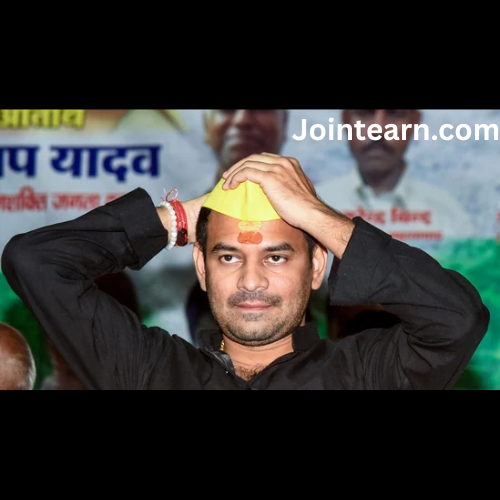The United States Department of Labor recently released a new video highlighting what it described as the misuse of the H-1B visa program, sparking widespread attention due to its direct mention of India. The video, shared on the department’s X handle on October 30, 2025, focuses on how foreign workers, according to the video, have “stolen” the American dream from U.S. citizens because of corporate and political misuse of the H-1B visa program.
The 52-second-long video features a pie-chart graphic showing the distribution of H-1B visa holders by country. India prominently dominates the chart, with a 72% share of all H-1B visas, underscoring the centrality of Indian professionals in the U.S. tech and specialized workforce. As the voiceover notes, “Many young Americans have had this dream stolen from them by foreign workers as politicians and bureaucrats allowed companies to abuse the H-1B visa.” The video concludes with the statement, “Recapturing the American dream for American people,” reflecting the Trump administration’s focus on prioritizing American workers over foreign visa holders.
The video is part of a broader narrative pursued by former President Donald Trump, who has long emphasized anti-immigration and “America First” policies, particularly in relation to skilled work visas. Under this policy framework, the administration has implemented a series of measures aimed at ensuring that H-1B visas are used only by foreign workers filling roles that cannot be staffed by American employees. The video mentions Trump’s Project Firewall, a policy initiative aimed at holding companies accountable for H-1B misuse and ensuring that American workers are given priority in hiring.
India’s dominant presence in the H-1B program is reflected in official data. According to the U.S. Office of Homeland Security, India was the largest source country for H-1B visas in fiscal year 2024, contributing 33% of the total non-immigrant population in the United States. Indian IT and technology professionals constitute the bulk of this workforce, which spans sectors such as information technology, engineering, medicine, and scientific research.
The video comes against the backdrop of recent policy actions by the Trump administration, including a controversial move on September 19, 2025, when Trump signed a proclamation imposing a $100,000 one-time fee on H-1B visa applications. This fee took effect on September 21 and caused immediate concern among Indian visa applicants and the broader immigrant community. The White House later clarified that the fee was a one-time payment and not annual, and it would not impact current H-1B holders. Officials justified the fee increase as a mechanism to ensure that only highly skilled foreign workers, particularly those in positions that could not be filled by qualified American workers, would enter the U.S. under the program.
The H-1B visa is a non-immigrant visa designed to allow U.S. companies to employ foreign professionals in specialty occupations. Typically, it is issued for an initial three-year period, extendable up to six years. The visa has long been a critical pathway for skilled professionals from India, particularly in IT and engineering, to work legally in the United States. However, it has also been the subject of political debate in the U.S., with critics arguing that companies exploit the program to hire cheaper foreign labor at the expense of domestic workers.
The Trump administration’s video campaign underscores this narrative, framing the H-1B program as a tool that has allegedly enabled companies to bypass hiring Americans, with foreign nationals occupying roles that could otherwise go to U.S. citizens. By highlighting India’s 72% share of H-1B visas, the video brings a bold focus to the country, effectively linking Indian professionals with the perceived misuse of the visa system.
While the video has drawn attention for its direct and politically charged message, it also reflects ongoing concerns about visa allocation, labor protection, and the balance between foreign and domestic talent in the U.S. labor market. Trump’s policies, including the high visa fee and stricter scrutiny of H-1B applications, are part of a broader effort to ensure that only highly qualified and irreplaceable foreign professionals gain access to the U.S. workforce.
Experts note that the H-1B visa has historically played a dual role: it provides critical talent to American companies while also creating a pathway for global professionals to contribute to U.S. innovation and development. Critics of the Trump administration’s approach argue that the new measures risk discouraging skilled immigrants and could lead to shortages in high-tech and specialized fields, where American labor supply alone cannot meet demand.
The debate around H-1B visas has significant implications for U.S.-India relations, particularly given the high number of Indian professionals in the program. Any policy perceived as restrictive or punitive toward Indian workers can have diplomatic, economic, and social consequences. Indian tech companies, which rely heavily on H-1B talent for operations in the United States, closely monitor such changes, as they directly affect workforce planning, project delivery, and talent mobility.
In conclusion, the Trump administration’s recent video and policy measures on H-1B visas highlight an ongoing tension in U.S. immigration and labor policy. By singling out India as the largest source of H-1B visa holders, the video frames the narrative in starkly nationalistic terms, emphasizing “recapturing the American dream” for citizens while cautioning against what it views as misuse of the system. For Indian professionals and companies, the developments underscore the importance of staying informed about visa rules, compliance requirements, and potential changes in the U.S. immigration landscape, which continue to have a far-reaching impact on global talent mobility.
The video and policy actions represent another chapter in the ongoing discussion over the H-1B program’s role in the U.S. economy, balancing the needs of American workers with the demand for foreign expertise. As the debate evolves, the spotlight remains firmly on India due to its disproportionate representation in the program and the vital role its professionals play in sustaining critical sectors of the American economy.


Leave a Reply